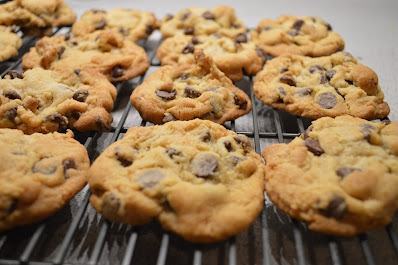by Charles R. Swindoll
Psalm 23:1–2
I shall not lack rest or provision—why? He makes me lie down in green pastures.Verse 1
I shall not lack peace—why? He leads me beside quiet waters.
I shall not lack restoration or encouragement when I faint, fail, or fall—why? He restores my soul.
I shall not lack guidance or fellowship—why? He guides me in the paths of righteousness.
I shall not lack courage when my way is dark—why? Even though I walk through the valley of the shadow of death, I fear no evil.
I shall not lack companionship—why? You are with me.
I shall not lack constant comfort—why? Your rod and Your staff, they comfort me.
I shall not lack protection or honor—why? You prepare a table before me in the presence of my enemies.
I shall not lack power—why? You have anointed my head with oil.
I shall not lack abundance—why? My cup overflows.
I shall not lack God's perpetual presence—why? Surely goodness and mercy shall follow me all the days of my life.
I shall not lack security—why? I will dwell in the house of the Lord forever.
The first verse establishes the theme of the song. But for now I call your attention to two things in this sentence:
1. David refers to God as "the LORD." This divine name is based on the Hebrew verb "to be" and stems from God's identification of Himself to Moses. He said, "I AM WHO I AM" and "Thus you shall say to the sons of Israel, 'I AM has sent me to you'" (Exodus 3:14). The idea being, YHWH is the self-existent Being, the God who actually exists, as opposed to all those that do not exist.
2. David calls YHWH "my Shepherd." To David (the sheep), God was his own personal Shepherd. Not merely the Shepherd of the great flock of all humanity, but the Shepherd who calls him by name and cares for him as an individual.
Verse 2
Having established the theme, the composer begins to develop the word picture. He starts with the pastoral picture of sheep under a shepherd's care. I am told that sheep, being stupid animals, frequently are alarmed and actually run over each other, racing away from something that startles them. The shepherd corrects the problem by catching a sheep and gently, yet firmly, forcing it to lie down and feed quietly on the grass beneath its feet. David remembers such an occasion as he writes, "He makes me lie down."
In our hectic, hurried, harassed age in which headache and tranquilizer medications have become the best-selling national products, we must occasionally be made to lie down by our Shepherd-Savior. When He steps into our helter-skelter world, He must often force us to rest. If that has occurred, give thanks—the pastures are green!
This verse concludes with another pleasant picture: "He leads me beside quiet waters." Look at that phrase. Literally, it refers to waters that have been stilled. Mentally capture the peaceful scene. The sheep are weary and worn. They need a long, refreshing drink from the rapid stream nearby. But sheep are instinctively afraid of rapidly running water. Perhaps they think that if water should get on their heavy coats of wool, they would become waterlogged and sink beneath the surface of a stream. As a result, even though tired and hot from a blistering day, thirsty sheep will only stand and stare at the fast-flowing stream but never drink. Uncertainty keeps them from needed refreshment. The shepherd leads them to quiet, peaceful waters, where they may drink without fear.
Adapted from Charles R. Swindoll, Living the Psalms: Encouragement for the Daily Grind (Brentwood, Tenn.: Worthy Publishing, a division of Worthy Media, Inc., 2012). Copyright © 2012 by Charles R. Swindoll, Inc. All rights are reserved. Used by permission.




